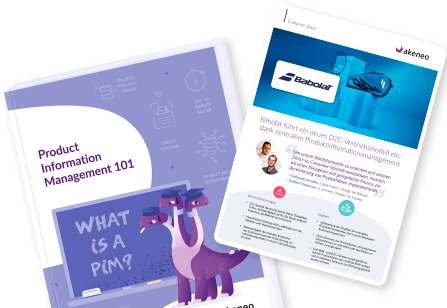Jan 21, 2023
6 min to read
Building a site search function can be a complex and challenging process. That’s why Akeneo teamed up with our partners Algolia and Capgemini to create this list of tips, tricks, and best practices to help you master all that site search has to offer.

This blog was written with help from Akeneo partners Algolia and Capgemini.
If there’s one thing most people associate with the internet, it’s a search. “Google” has become a verb, and is synonymous with finding information from just about any source. It’s the first company that comes to mind when many consumers think of the internet.
But search isn’t just about internet-wide search engines like Google. It’s also crucial that B2B business and B2C companies alike offer search tools that can help consumers navigate their own eCommerce or mobile shopping experiences and find the specific products they’re looking for at a moment’s notice.
Building a site search function can be a complex and challenging process, one filled with product data-related pitfalls and site performance issues. That’s why Akeneo teamed up with our partners Algolia and Capgemini to create this exhaustive list of tips, tricks, and best practices to help you master all that site search has to offer. Plus, we’ll dive into exactly how a PIM solution can set you up for success.
Search and discovery is at the heart of great customer experiences. Consumers want and expect to be able to search for products easily on any eCommerce site or other shopping platform. According to a 2020 study, a third of all visitors utilize a search box when offered. Plus, giving this large, ever-growing percentage of consumers a good site search experience can go a long way toward boosting conversion rates: according to the same study, site search is 1.8x more effective at producing conversions.
Site search can also have a big impact on the product experience that you offer to your consumers: two-thirds of shoppers say that they have abandoned their purchase due to a bad product experience, and almost 70% of shoppers say that poor search experience is a poor product experience.
But it’s not just about offering a search tool — the searches you provide have to be accurate and provide a compelling list of products to customers. Solène Le Saout, Manager Partnerships EMEA at Algolia, noted that bad site search offerings, “threaten growth and disrupt the customer journey,” and researchers have found that a significant percentage of shoppers will bounce to a competitor’s site after an unsatisfactory search.
Finally, search goes beyond the search bar. A capable search solution will also power your Category pages – or Product Listing Pages – where the key criteria of a great search are also critical for a highly converting shopping experience.
Site search is clearly popular with consumers, and a valuable resource for retailers — but most companies are falling short of consumer expectations. The frustration involved in the overall product search experience results in an unacceptable level of churn and burn: to the tune of 68%, according to Forrester.
So, how can you build a satisfying site search tool? According to Akeneo partners Algolia and Capgemini, it’s all about finding a platform that fits your needs — both now and in the future. “Your customers are looking for an intuitive and immersive experience when they access your website,” according to Solène Le Saout. “Your job is to anticipate their needs, help them easily find that product, complete the purchase, and come back.”
Your solution should provide a wide range of features that can help you provide an advanced search experience both now and as your site continues to grow. That includes strong analytics tools to help you understand your customers and refine your sales channels, as well as customization tools to ensure customers see exactly the results they’re looking for. Your site search platform should also perform reliably, quickly, and easily with features like typo tolerance, suggestions, filters, synonyms, and multilingual options.
A good site search solution will also be built on a strong foundation of reliability and security, meaning that it should offer security features like SOC 2 and SOC 3 compliance, API keys, cluster isolation, and multi-tenant architecture. It should also provide a reliable infrastructure that requires very low if not no oversight from your developers, along with a support team dedicated to handling a wide range of site search issues. That way, you can be sure that not only your search tools are never down or offline, but your engineering team spends time on iterating and innovating on your product experience rather than maintaining a complex infrastructure.
Having a good site search platform alone is not enough, of course. Jérémie Devie, Business Analyst at Capgemini notes that, “A foundation of solid product data is needed to answer your customers’ needs and increase conversions.”
This includes having the right attributes to ensure your customers’ searches don’t bring up the wrong product, instituting good data governance policies, and enriching product titles and descriptions with relevant keywords. It also includes ensuring your data is consistent and accurate, as well as correctly categorizing your product information.
In order to do all of these things and provide the best product experience possible, you need a strong solution to help you collect, standardize, enrich, contextualize, and distribute your product data — like Akeneo PIM! Akeneo PIM is designed to help you take control of your product data and provide superior product experiences for your customers through the power of features like site search. Reach out to an Akeneo expert today to see how our PIM technology, together with our extensive network of partners like Algolia and Capgemini, can help you provide exceptional product experiences through site search.
Discover everything Akeneo has to offer and start your journey towards omnichannel product experiences.

Sign up for our newsletter and stay ahead of the curve on everything you need to know about product information management, product experience management and how to unlock growth for your organization.
